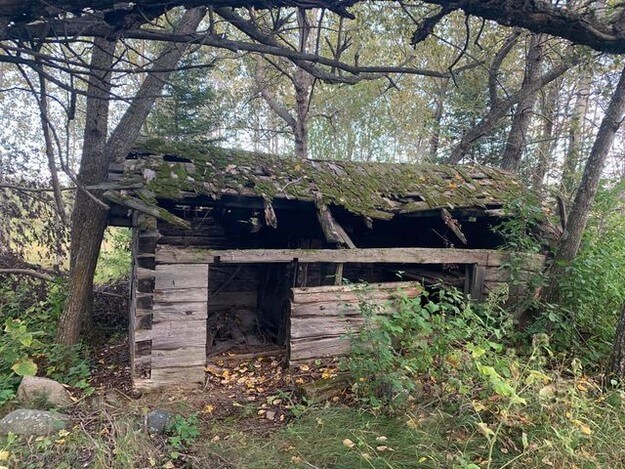
The sauna builder’s grandson has just been granted permission to recover the smoke sauna and restore it in the Rocky Mountains
The more we write about Estonian saunas, the more people write to us about weird and wonderful Estonian saunas for us to cover, writes Adam Rang in Estonian Saunas Magazine at medium.com .
One in particular stood out recently. It’s a Seto smoke sauna.
It’s not in great condition, but that’s about to change — and it has an incredible story to tell.
The Seto people are a Finno-Ugric minority group in South-East Estonia with a Kingdom that spreads across the border into Russia.
Their ancient smoke sauna tradition remains an important part of life there today.
This email did not reach us from the Seto Kingdom, however.
It came from Wayne Nesbitt who lives 7,000 kilometres away over in Toronto, Canada. Wayne has Estonian grandparents who settled in a village called Finland in North Western Ontario.
His grandfather arrived in 1911, seven years before Estonia became an independent state and so he later managed to acquire Estonian passport number 79 in order to travel back to Estonia in 1923, marry, and return with Wayne’s grandmother.
They wanted to own their own land for the first time so they joined the Great Migration to North America of mostly Finnish and other Nordic peoples around the turn of the 20th century, hence the name of the village.
They set up a successful lumber mill and raised Wayne’s parents there.
Although Wayne never met his Estonian grandparents, he’s been researching his heritage in recent years and this led to his discovery that they are Seto.
He has since travelled to the Seto Kingdom to learn more about the culture and even managed to reconnect with distant family.
This summer though, he had another surprise while exploring the land they once owned in Canada.
The remains of a smoke sauna built by his grandfather are still there.
Wayne has one photo that reveals what the smoke sauna looked like in its glory days.
It’s in the background of a photo of his grandmother returning home on skis.
As there was no electricity on the property, the smoke sauna would have been important to their daily life there.
Although saunas around the world today as associated primarily with relaxing, smoke saunas have an important multi-functional role in Estonian life.
They were used not just for bathing, but also a wide range of purposes from childbirth to slow cooking smoked meat.
The land is now owned by a corporation, but Wayne immediately knew that he wanted to somehow restore the smoke sauna to its former glory.
He asked the corporation for permission to remove what is left of it so he could transport it thousands of kilometres to the Rocky Mountains and turn it back into a functioning smoke sauna.
“Honestly, I’m not sure why I want to do this,” Wayne told us. “In a simple sense, it’s a beautiful old log building.
What makes it worth my time to move it, is that my grandfather would have built it, which makes it special to me and my sisters and cousins.
We knew they were from Estonia, but it was only last summer that we found out they were Seto.”
We told Wayne we would give him all the help we could to lobby the corporation — as there are plenty of Estonians both here and among the diaspora in Canada who would support him.
As it turns out, this wasn’t necessary. He’s just messaged us again delighted to share the news that the corporation has granted permission for him to remove the smoke sauna.
“My understanding of the sauna tradition is healing and honouring ancestors,” explained Wayne. “I hope we can do both with the relocation of this sauna.”
The Seto people
There are about 15,000 Seto people today.
The vast majority of them live on the Estonian side of the border in the region of Võrumaa, even though most of their Kingdom is on the Russian side where they are also now an officially recognised minority of the Pskov Oblast.
In Estonia, they are a nation within a nation within a nation.
The Seto people have their own unique language and culture, as do their neighbouring Võru people that the region is named after.
As with the Estonians though, they are all closely related Finno-Ugric peoples.
Both the ancient smoke sauna tradition of Võrumaa (known as savvusann) and the ancient polyphonic singing tradition of the Seto people (known as leelo) are separately listed by UNESCO as representative of the Cultural Heritage of Humanity.
The smoke sauna is the oldest and most special type of sauna in our part of the world.
A fire is lit inside a room for around half a day beneath a pile of large stones, which absorb the heat energy and then slowly release it for the second half of the day once the fire has died out and the smoke has been released so that people can go inside to bathe.
During Wayne’s trip to Estonia for the first time late last year, he learnt about Seto culture with Seto Tour Guide Helen and visited the Obinitsa museum where, coincidentally, one of the women working there happened to be a distant relation to Wayne.
EDIT: Since writing this article, there’s been a hugely positive response to Wayne from both Estonians at home and abroad, as well as sauna enthusiasts around the world.
We’ve also been contacted by journalists who have written up the story in Estonian both in Postimees and Elu24. – Adam Rang












